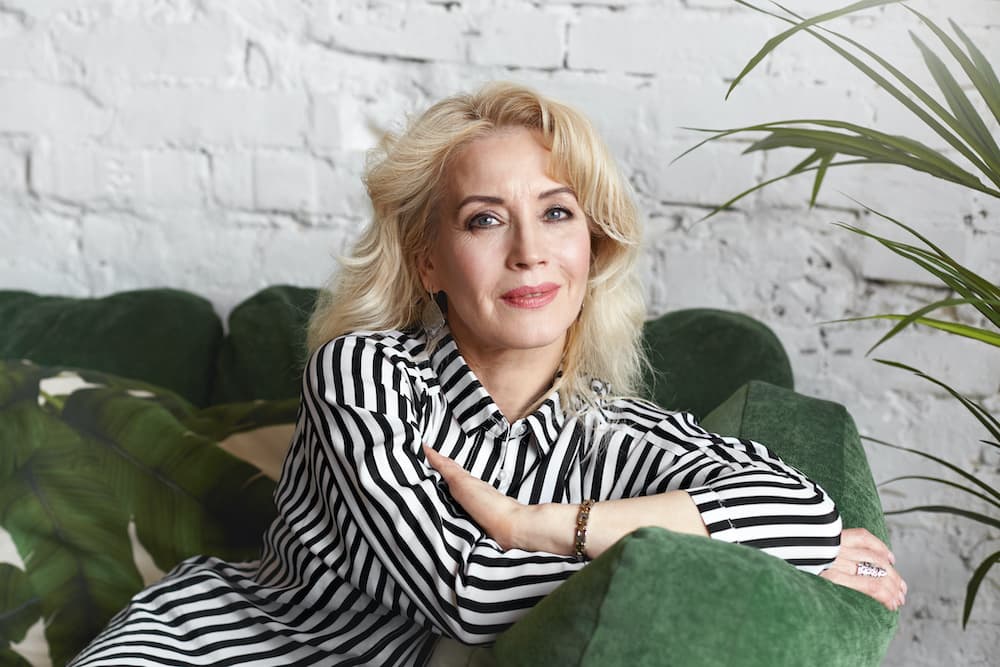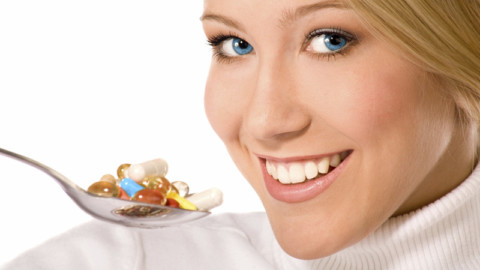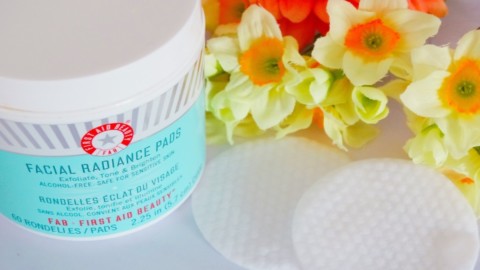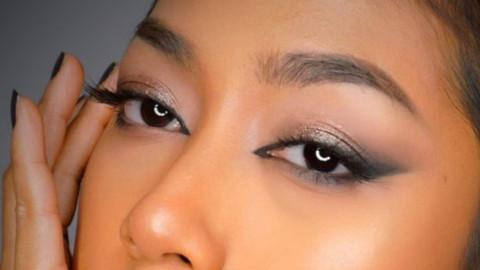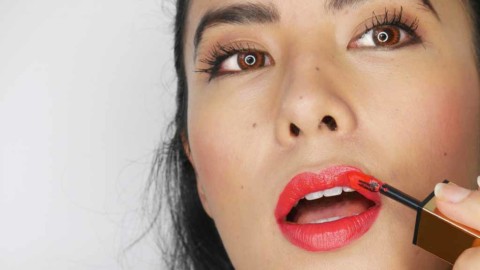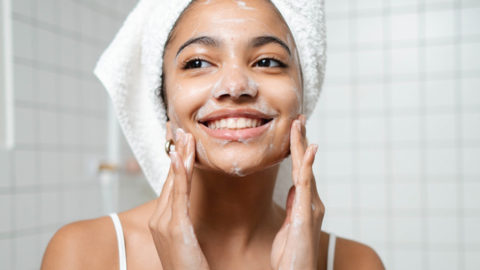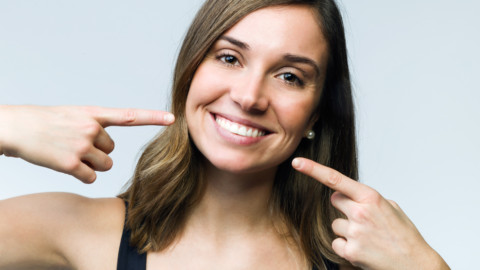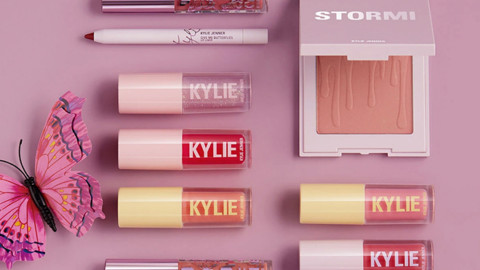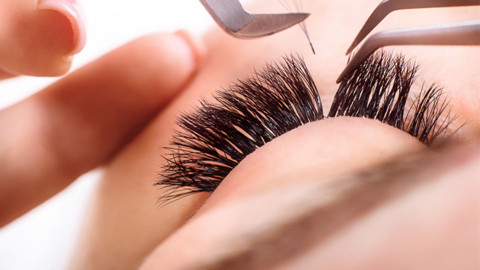Our skin changes as we age, as do our concerns and needs. In your teens and 20s, you might have been fighting against acne or oily skin. Fast forward 25 years and you’re now battling wrinkles, age spots and dry skin.
Just as our concerns change with age, so do our needs to meet them. And just as our skin changes, so does the way makeup sits on it. You wouldn’t wear the same dress you wore on your 18th birthday, so why would you wear the same makeup?
A Good Base
A good skin care routine and a healthy complexion are important to create a good base for your makeup. Moisturizing and exfoliation are crucial to create a primed canvas for makeup because makeup will grab on to any available dry skin to make itself appear heavy and obvious.
Primer
After you allow a lightweight moisturizer to fully sink in, apply a quick absorbing primer to target your troubled areas. Primers even out skin tone, conceal large pores and fine lines, and hold your foundation in place. Don’t try too hard to create a perfect, wrinkle-free canvas since trying to hide your wrinkles ends up drawing more attention to them. Less is more when it comes to make up after 40.
Start With The Eyes
You might be surprised to learn after all these years that you’ve probably been applying makeup in the wrong order. You actually want to start with the eyes, not foundation. It reduces the risk of any eyeshadow fallout that can create the appearance of dark circles and prevents any excess makeup from setting into your fine lines and wrinkles.
As we get older, the skin around our eyes thins and our eyelids become slightly transparent, displaying some uneven tones of blues and reds. Use an anti-aging eyeshadow primer to even out the lid.
Shadow
Begin eyeshadow application from the outer corner of the eye and work your way inwards so that the color gradually lightens as you approach the inner corner, lending you a more wide-eyed look. We want our eyes to appear as big and youthful as possible, and overdone eyes can make them seem weighed down and droopy. Don’t extend the shadow beyond the edge of the eye – it makes eyes look tired and accentuates saggy skin along the jawline.
The eyelids can become hooded and droopy as we age, cheating the lids out of space and making them appear smaller. A fantastic trick (and my personal favorite) is to create a “faux” lifted crease by sweeping the contouring shadow slightly above your natural crease instead of directly on it. This creates an illusion to open the eyes, hiding the hood and making them look bigger.
When it comes to choosing colors, steer clear of browns. Their yellow and red pigments can make the eyes look tired. Always opt for a matte shadow, not shimmery. Sparkly makeup on older, textured skin accentuates your wrinkles.
Liner
As for eyeliner colors, many older women find that black liner looks harsher than it used to when they were younger. Brown is softer, or give navy blue a try – it makes the eyes look whiter.
Liquid liner can come off a bit heavy on older eyes, and wrinkles can make it difficult to swipe liquid or gel liner smoothly across the lash line. Try dotting with a pencil liner between each lash to make your eyes pop – it won’t tug at the lids and provides a more natural and even line. Keep in mind that lining the bottom lid or waterline makes the eyes look smaller, so only do so if you wish. Or better yet, apply a white or cream colored liner to your waterline to make your eyes appear larger.
Mascara
Just as skin changes with age, so do lashes. Your lashes can become brittle and thinner over time and mascara can become too clumpy for the fragile hairs. To avoid spiky spider lashes, opt for a lengthening mascara instead of a clumpy thickening formula.
Brows
A thicker brow instantly makes you look younger. Some makeup artists prefer to do eyebrows before eye makeup. They give the eye a bigger frame to work with, and you might end up needing and applying less makeup on the eye.
Eyebrows severely thin out as we age, so try to keep them as full as possible. Trim them instead of plucking (since they might not grow back) and make sure to fill them in for a more youthful appearance. Overdone brows come off as harsh and fake so apply a pencil in a natural shade with feather light strokes. If you have dark hair, choose a color one or two shades lighter and if you have blond or grey hair, choose one or two shades darker.
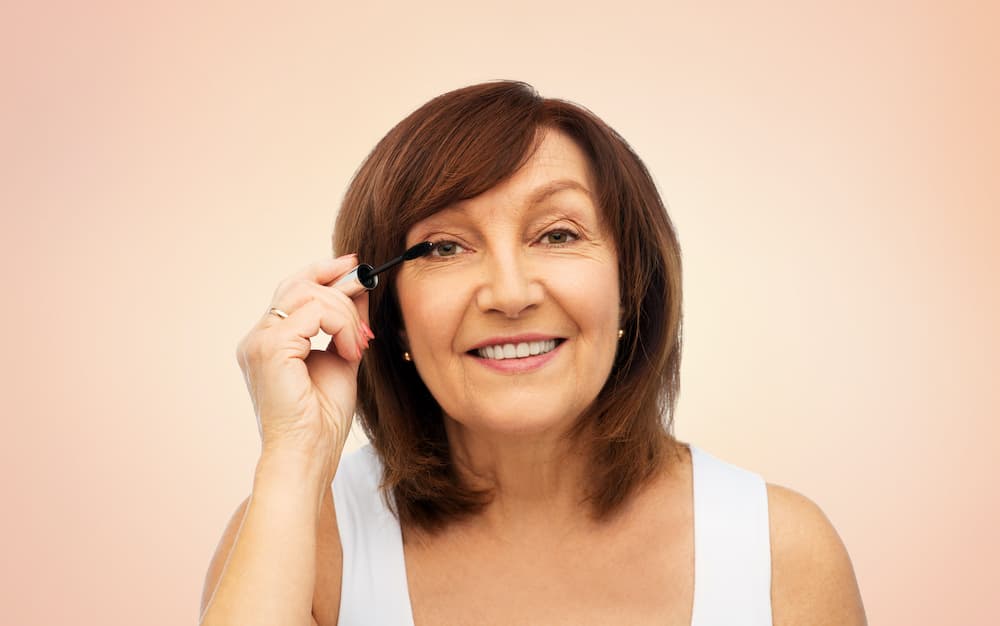
Face-Time
Foundation Concealer
As our hormone levels dip, our skin gets drier. While your instincts might tell you to go for a creamier and heavier foundation to battle the dryness, it would actually be counterproductive and create a clownlike mask. Look for a lightweight and sheer hydrating foundation for a more natural look.
When choosing a color, don’t go for an exact match like you did when you were younger. Go for a shade or two warmer to prevent your face from looking washed out. Skip the powder as it makes older skin look super dry and sticks to any unwanted facial hairs.
Concealer
Applying concealer after foundation is a great practice for aging skin because you end up using less of it, preventing it from looking overdone. Choose a creamy concealer that blends easily, but don’t cake it on as concealer sinks into wrinkles and draws attention to them. When attempting to cover dark circles, apply it only to the inner corners of the eyes and the inner halves of the undereyes. Keep the concealer away from the wrinkles and crow’s feet at the outer corner of the eye. If attempting to conceal age spots, opt for a slightly darker shade than you use on your eyes since a lighter shade of concealer would not cover them and make the spots appear ashy.
Bronzer
Bronzer is a wonderful product for older skin as it brings back your radiant, youthful glow. It warms up the skin in a natural way, so don’t be skimpy with it and just apply it to your cheekbones. Get an all-over glow by using it on your forehead, the sides of your nose and under your jawline.
Blush
Blush, on the other hand, can be harsh on mature skin and emphasize any gauntness that you might have. A cream blush provides a natural and dewy flush to the skin. Instead of applying it on the apples of your cheeks, use a light hand to apply it at the top of the apples and blush upwards, giving your face a nice boosted lift.
Lip Service Flawless Finish
Liner and color
Our natural lip border dulls as we get older and our lips can become asymmetrical. Use a natural toned lip pencil to restore balance to your lip line, lining the outer edges rather than the inside to make older, thinner lips appear fuller. Then use a moisturizing lip color to blend into the lined edges to soften them. Choose a moisturizing, sheer lipstick or gloss; intense lip color textures will age you and look goopy. Lighter shades will make thin lips appear fuller.
Flawless Finish
Setting spray
Finish your flattering new look with a hydrating setting spray. The spray holds the makeup in place and melts it into your skin for a flawless and natural appearance. It also will provide lasting hydration for a luminous and ageless glow!

